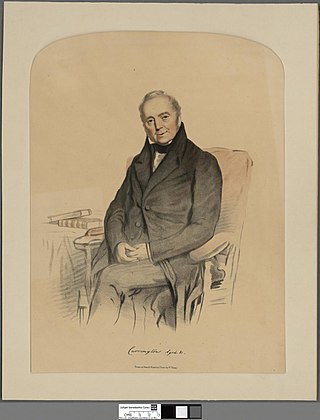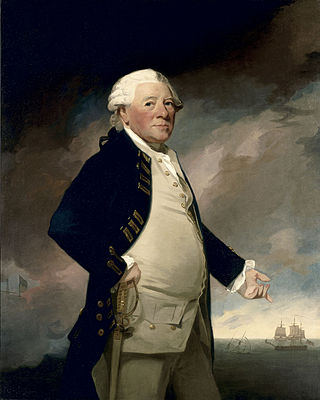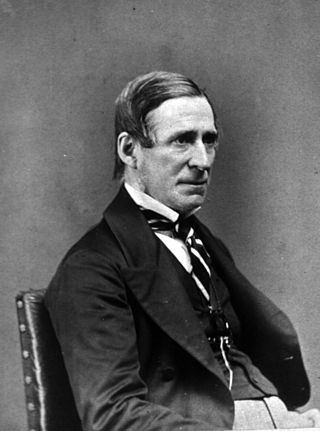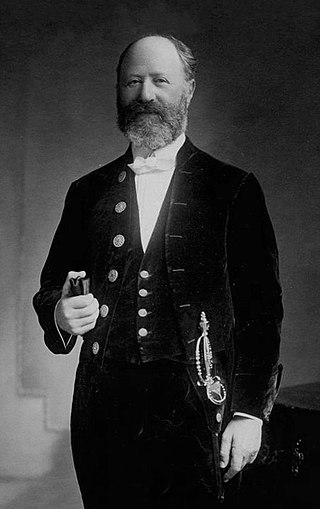
Earl of Buckinghamshire is a title in the Peerage of Great Britain. It was created in 1746 for John Hobart, 1st Baron Hobart.

Viscount Scarsdale, of Scarsdale in Derbyshire, is a title in the Peerage of the United Kingdom. It was created in 1911 for the prominent Conservative politician and former Viceroy of India George Curzon, 1st Baron Curzon of Kedleston, who was created Earl Curzon of Kedleston at the same time and was later made Marquess Curzon of Kedleston.

Baron Carrington is a title that has been created three times, once in the Peerage of England, once in the Peerage of Ireland and once in the Peerage of Great Britain.

Baron Bellew, of Barmeath in the County of Louth, is a title in the Peerage of Ireland. It was created on 17 July 1848 for Sir Patrick Bellew, 7th Baronet, who had previously represented Louth in the House of Commons as a Whig and also served as Lord Lieutenant of County Louth. His grandson, the third Baron, was also Lord Lieutenant of County Louth and sat in the House of Lords as an Irish representative peer from 1904 to 1911. He was succeeded by his younger brother, the fourth Baron. He was an Irish Representative Peer from 1914 to 1931. In 1881 Lord Bellew assumed by Royal licence the additional surname of Bryan under the terms of the will of his maternal uncle Colonel George Bryan. However, he is the only one of the Barons to have held this surname. On his death the titles passed to his nephew, the fifth Baron, and then to his younger brother, the sixth Baron. As of 2018 the titles are held by the latter's grandson, the eighth Baron, who succeeded in 2010.

Baron Hesketh, of Hesketh in the County Palatine of Lancaster, is a title in the Peerage of the United Kingdom. It was created in 1935 for Sir Thomas Fermor-Hesketh, 8th Baronet, who had previously briefly represented Enfield in the House of Commons as a Conservative. As of 2010 the titles are held by his grandson, the third Baron, who succeeded his father in 1955. Lord Hesketh held junior ministerial positions in the Conservative administrations of Margaret Thatcher and John Major. However, he lost his seat in the House of Lords after the House of Lords Act 1999 removed the automatic right of hereditary peers to sit in the upper chamber of Parliament.

Baron Glentoran, of Ballyalloly in the County of Down, is a title in the Peerage of the United Kingdom. It was created on 8 July 1939 for the Unionist politician Herbert Dixon. In 1950 he also succeeded his elder brother as third Baronet, of Ballymenock. His son, the second Baron, was also a politician and served as the last Speaker of the Senate of Northern Ireland. As of 2017 the titles are held by the latter's son, the third Baron, who succeeded in 1995. He is a former Olympic bobsleigh gold medallist as well as a soldier, businessman and politician. Lord Glentoran was one of the ninety elected hereditary peers who remain in the House of Lords after the passing of the House of Lords Act 1999, and sat on the Conservative benches until his June 2018 retirement under the House of Lords Reform Act 2014.

Baron Northbrook, of Stratton in the County of Southampton, is a title in the Peerage of the United Kingdom. It was created in 1866 for the Liberal politician and former Chancellor of the Exchequer, Sir Francis Baring, 3rd Baronet. The holders of the barony represent the genealogically senior branch of the prominent Baring family. The name Northbrook is derived from a tithing of the local parish.
Baron Brocket, of Brocket Hall in the County of Hertford, is a title in the Peerage of the United Kingdom. It was created on 19 January 1933 for the businessman Sir Charles Nall-Cain, 1st Baronet. He was chairman of the brewing firm of Robert Cain & Sons, which had been founded by his father Robert Cain. Before his elevation to the peerage, Nall-Cain had been created a baronet, of the Node, in 1921. His son, the second Baron, represented Wavertree in the House of Commons as a Conservative. As of 2017 the titles are held by the latter's grandson, the third Baron, who succeeded in 1967.

Baron Broadbridge, of Brighton in the County of Sussex, is a title in the Peerage of the United Kingdom. It was created in 1945 for the Conservative politician Sir George Broadbridge, 1st Baronet. He had already been created a Baronet, of Wargrave Place in the County of Berkshire, on 22 November 1937. The title descended from father to son until the death of his grandson, the third Baron, in 2000. The late Baron was succeeded by his first cousin, who became the fourth holder of the titles. He was the son of Hugh Trevor Broadbridge, third son of the first Baron. He was in turn succeeded by his only son, Richard, a retired air vice-marshal who was honorary surgeon to the Queen, in 2020.
There have been two baronetcies created for persons with the surname Hobart, one in England and one in the United Kingdom, with both creations for branches of the same family.
There have been two baronetcies created for members of the Orr-Ewing family, both in the Baronetage of the United Kingdom. Both creations are extant as of 2010.
There have been three baronetcies created for persons with the surname Harvey, all in the Baronetage of the United Kingdom.

The Sheffield Baronetcy, of Normanby in the County of Lincoln, is a title in the Baronetage of Great Britain. It was created on 1 March 1755 for Charles Herbert Sheffield, the illegitimate son of John Sheffield, 1st Duke of Buckingham and Normanby.

There have been seven baronetcies created for persons with the surname Parker, three in the Baronetage of England, two in the Baronetage of Great Britain and two in the Baronetage of the United Kingdom. Two of the creations are extant as of 2008. Though none of the different families of baronets were related, several supplied a number of flag officers to the Royal Navy.

There have been three baronetcies created for members of the Blakiston family of Blakiston, County Durham, two in the Baronetage of England and one in the Baronetage of Great Britain. One creation is extant as of 2008.
There have been nine baronetcies created for persons with the surname Moore, two in the Baronetage of England, one in the Baronetage of Ireland, two in the Baronetage of Great Britain and four in the Baronetage of the United Kingdom. As of 2014 two creations are extant and one is considered dormant.

There have been eight baronetcies created for persons with the surname Wilson, one in the Baronetage of Ireland and six in the Baronetage of the United Kingdom.

There have been three baronetcies created for persons with the surname Paget, all in the Baronetage of the United Kingdom. A fourth created for the Bayly family in the Baronetage of Ireland is now held by the Paget family. Three of the creations are extant.
There have been seven baronetcies created for persons with the surname Powell, five in the Baronetage of England and two in the Baronetage of the United Kingdom. Only one creation is extant as of 2007.

Sir Herbert Samuel Leon, 1st Baronet was an English financier and Liberal Party politician, now best known as the main figure in the development of the Bletchley Park estate in Buckinghamshire.
 Sir Herbert Samuel Leon, 1st Baronet (1850—1926)
Sir Herbert Samuel Leon, 1st Baronet (1850—1926)  Sir George Edward Leon, 2nd Baronet (1875—1947)
Sir George Edward Leon, 2nd Baronet (1875—1947)  Sir Ronald George Leon, 3rd Baronet (1902—1964)
Sir Ronald George Leon, 3rd Baronet (1902—1964)  Sir John Ronald Leon, 4th Baronet (1934—) (known as the actor John Standing)
Sir John Ronald Leon, 4th Baronet (1934—) (known as the actor John Standing) 











